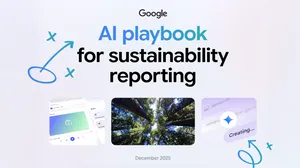Our first step into long-duration energy storage with Energy Dome
Electricity powers modern life. And we’re accelerating a wide range of technologies, from enhanced geothermal to advanced nuclear to even fusion technologies, that can enable a future where on-demand electricity needs are met with clean energy, every hour of every day.
Today, we’re adding another technology to our portfolio: long duration energy storage (LDES). Through a new long-term partnership with Energy Dome, we plan to support multiple commercial projects globally to deploy their LDES technology.
Energy Dome’s novel CO2 Battery can store excess clean energy and then dispatch it back to the grid for 8-24 hours, bridging the gap between when renewable energy is generated and when it is needed. With this commercial partnership, as well as an investment in the company, we believe these projects can unlock new clean energy for grids where we operate before 2030, helping meet near-term electricity system needs and moving us closer to our 24/7 carbon-free energy goal.
By bringing this first-of-a-kind LDES technology to market faster, we aim to rapidly bring its potential to communities everywhere — making reliable, affordable electricity available around the clock and supporting the resilience of grids as they integrate growing amounts of renewable energy sources.
Why it’s important
Lithium-ion batteries, which typically store and dispatch power for 4 hours or less, have been critical for adding electricity capacity to grids and managing short-term fluctuations in renewable generation — when the sun isn’t shining or the wind isn’t blowing. Google’s support for these shorter-duration batteries has helped the grids we rely on, from Belgium to Nevada, meet peak electricity demand and reduce the need to ramp up fossil fuel power plants.
But what if we could store and dispatch clean energy for more than a few hours, or even a full day? Studies by the Electric Power Research Institute show that LDES technologies can cost-effectively integrate a growing volume of renewables onto power systems and contribute to more flexible, reliable grids. The LDES Council estimates that deploying up to 8 terawatts (TW) of LDES by 2040 could result in $540 billion in annual savings globally, thanks in part to their ability to optimize grids.
How the technology works
Energy Dome’s novel approach to energy storage uses carbon dioxide (CO₂) held in a unique dome-shaped battery. When there's an abundance of renewable energy on the grid, the system uses that power to compress CO₂ gas into a liquid. When the grid needs more clean power, the liquid CO₂ expands back into a hot gas under pressure, creating a powerful force – much like steam escaping a pressure cooker – which spins a turbine. This spinning turbine generates carbon-free energy that can flow directly back into the grid for durations ranging from 8 to 24 hours.
Energy Dome has already demonstrated product-market fit by signing multiple contracts for commercial-scale projects in Italy, the US, and India. The technology has already proven successful, having injected electrons into the Italian grid for more than three years, thanks to their commercial demo facility, and now with their full-scale 20MW-200MWh commercial plant.
Why scale is crucial
LDES, which Energy Dome is leading with its CO2 Battery, has the potential to commercialize much faster than some of the other advanced clean energy technologies in our portfolio. This means we can use it in the near term to help the electricity system grow more flexibly and reliably, alongside other tools we’re developing, such as data center demand response.
By supporting multiple commercial deployments of Energy Dome’s technology globally, and making an investment in the company, we aim to bring this technology to scale faster and at lower costs. Beyond our long-term collaboration with Energy Dome, we plan to support a growing range of LDES technologies under development through both commercial agreements that can catalyze wider market adoption of more mature technologies, like Energy Dome’s, as well as earlier-stage investments.
To remove barriers to the deployment and commercialization of LDES and other advanced carbon-free energy technologies, we’re also advocating for clean energy policies, ensuring that energy markets fully value firm, flexible carbon-free technologies, and advancing policy measures that enable infrastructure essential for grid decarbonization and energy security.
We're excited to take this first step with Energy Dome to unlock the full potential of LDES. Our partnership will strengthen grid resilience while enabling us to power our technologies, grow our economies and keep the lights on in our homes with 24/7 clean energy.






